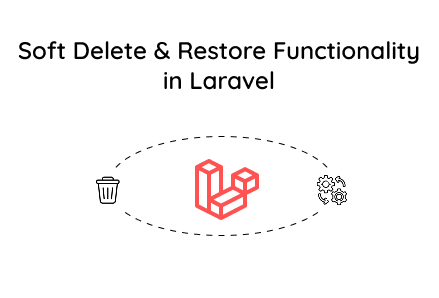Soft delete in Laravel preserves data integrity by using timestamps, enabling safe record recovery, audit trails and reversible deletions without permanently removing database entries.
Key Points

Sr. Web Developer
Sunil M.
3 min read
Passionate web developer with 4+ years of experience creating responsive and high-performing web applications.

Soft deleting is a crucial feature for modern web applications, allowing developers to "delete" records without permanently removing them from the database. Instead, Laravel marks records as deleted by setting a deleted_at timestamp. This approach helps maintain data integrity and allows for easy restoration of data if needed.
Whether you’re working on custom web development or providing website development services, implementing soft delete and restore features with Laravel can enhance your app’s usability and data management. This tutorial is ideal for Laravel developers, Frontend developers, and Backend developers who want to leverage Laravel web development effectively.
Make sure you have the following ready before starting:
PHP 8 or later installed
Laravel 8 or later installed
A database table (e.g., products) with a deleted_at timestamp column
Laravel project set up with a Product model created
Run this Artisan command to generate a model:
php artisan make:model Product
Update the app/Models/Product.php file:
The SoftDeletes trait enables Laravel’s soft delete functionality, which is a best practice when building applications during custom web development projects.
Add these routes to routes/web.php to handle product operations:
use App\Http\Controllers\ProductController;
These routes allow viewing all products, soft deleting, restoring, and permanently deleting a product.
Generate the controller using:
php artisan make:controller ProductController
Then add the following methods to app/Http/Controllers/ProductController.php:
These controller methods demonstrate how Backend Developers can easily manage soft deletion workflows using Laravel's robust Eloquent ORM.
Create a Blade template named products.blade.php in resources/views/:
This view demonstrates how Front-end Developers can create clean interfaces using Bootstrap for a perfect user experience while working alongside Backend developers in Laravel projects.
Using Laravel's built-in SoftDeletes trait allows developers to build flexible and user-friendly applications where data can be soft deleted and restored effortlessly. This feature is essential for any modern custom web development project, making it a must-have for website development services.
If you're planning to build or scale your web application, consider using Laravel for Web Development. It empowers both Front-end and Backend Developers to collaborate efficiently and deliver robust, maintainable solutions.
Looking to accelerate your next project? Hire Laravel Developers who specialize in building scalable apps with Laravel’s powerful features, like soft deletes. Their expertise will help you deliver high-quality products faster.

©2025Digittrix Infotech Private Limited , All rights reserved.